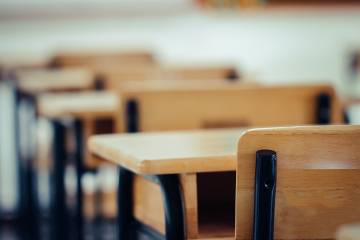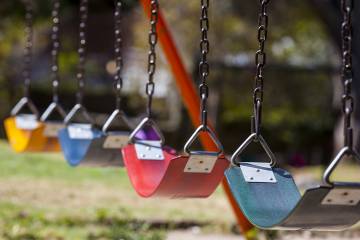Children and adolescents may appear to be less at risk for severe COVID-19 symptoms, but the pandemic has significantly disrupted their lives in other ways. Social distancing and the interruption of typical school routines can be especially challenging for adolescents, two Johns Hopkins experts say.
Tamar Mendelson, director of the Johns Hopkins Center for Adolescent Health and Bloomberg Professor of American Health at the Bloomberg School of Public Health, and Beth Marshall, associate director of the Johns Hopkins Center for Adolescent Health and an assistant scientist at the Bloomberg School of Public Health, joined MPH/MBA student Samuel Volkin to discuss the impact of the COVID-19 pandemic on adolescents, and what parents can do to help. This conversation has been edited for length and clarity.
How is the COVID-19 pandemic affecting adolescents?
Mendelson: The greatest impacts felt by adolescents stem from school closures, being in the house with family members, and not getting to see friends and peers. Adolescents have different developmental needs than adults. Teenagers are at the stage in life when they are very invested in social connections and in separating from their parents. So, COVID-19 social distancing requirements have a different emotional impact on them than on adults. Depending on their age and developmental stage, some adolescents may have a hard time understanding what the pandemic really means and how it impacts their world.
Marshall: Two of the developmental tasks of adolescence are to develop social skills and empathy and a sense of identity. Both of these tasks happen through interactions with peers. Disconnection from social outlets and peers will have some implications when we return to social settings. Schools are much more than just a place for delivering educational content, and I think that schools have started to recognize that students will come back with not only educational setbacks but also setbacks in their social and emotional skills.
What can parents do to help adolescents understand the COVID-19 pandemic?
Mendelson: It is important for adolescents to know that the disease generally does not affect them the same way as it affects adults. Parents can reassure them that it is not likely to make them seriously sick if they do not have underlying conditions that put them at risk. At the same time, communicate the importance of them playing their part in keeping other people safe. Give concrete steps about what they can do to keep the disease from affecting them and the people that they love. And make sure to use specific examples, such as the importance of protecting their grandparents.
Marshall: Some adolescents process things much more emotionally while others are more logic-oriented. That will impact what kind of information you share with them—be it a nurse's story for the former or a graph of the epidemic curve for the latter. We also need to think about how young people develop empathy skills. Give them concrete things they can be part of to help their community. Explain what wearing a mask in public does for someone else, or encourage them to write letters to health care workers and connect with those on the frontline keeping us safe.
How can parents of adolescents try to maintain a routine while they are at home?
Mendelson: Helping adolescents develop a consistent schedule is important for maintaining a sense of normalcy. It should include time to get homework done and participate in distance learning as well as time to exercise and get outside of the house, even if it's for a short amount of time. A routine should help young people to feel grounded and reduce stress to some extent.
Marshall: The only thing I would add in there is sleep. Not having to leave the house for school means that adolescents no longer have to wake up early to get to school. That could really throw off any sleep schedule. Adolescent brains need nine to 10 hours of sleep a night. Without a routine, sleep levels could be reduced and when that happens several nights in a row, adolescents may experience much higher levels of stress and lower levels of cognitive functioning.
Mendelson: Normally, early school schedules force adolescents to wake up whether or not they're ready. Adolescents' sleep clocks are programmed to go to sleep later in the night and wake up later in the day than children's sleep clocks are. Adolescents can follow these rhythms to a greater extent now that they are not forced to wake up early to get to school, as long as they're getting an adequate amount of sleep.
What advice do you have for parents about giving adolescents more leeway in screen time at home?
Marshall: How we usually limit consumption of screen time prior to the pandemic is less relevant now. Trying to maintain the same screen-time rules as pre-pandemic times is just going to increase stress both for adolescents and for parents. We have to make some changes in terms of what we find acceptable.
Mendelson: More important than the amount of screen time is actually the type of screen time. Screen time is different depending on whether adolescents are talking to friends or family members versus watching scary news programming that increases anxiety or being on social media in a way that exposes them to bullying or something negative. It is important to make sure that adolescents are using social media in positive and healthy ways. Adolescents depend on their mobile devices to connect with their friends, and it's more important for parents to help them use screen time in a good way rather than simply limiting its use.
Are there ways for young people to replace the support they typically receive in school settings while engaging in social distancing?
Mendelson: For those that have access to the internet and necessary technology, adolescents can reach out to friends through virtual platforms to stay in touch and maintain social connections. Having more time together as a family also produces developmental benefits. Families can start doing things they may not have had time to do together before—like playing board games after dinner and starting new family traditions.
Marshall: Youth development organizations like Heart Smiles and Harlem Lacrosse, both partners of the Hopkins Center for Adolescent Health, have really stepped up to support young people during this pandemic. Even though they are both in-person mentoring programs, they have completely shifted all of their mentoring programming online and are in touch with their members more frequently than they used to be. Programs like these allow young people who had healthy outlets outside of school like sports teams and youth development organizations to maintain these connections during the pandemic.
How can high-schoolers cope with disappointments about experiences that they are now unable to have—such as prom and graduation?
Mendelson: I am confident that they will come up with creative ways to celebrate these milestones. Young people should be given power and leadership to decide for themselves how to make up for not being able to do these things in person. They are incredibly innovative, so we will stay tuned to see the fun ways they choose to celebrate virtually.
Marshall: One thing that is really important for adults is to remember to allow their kids to grieve over their losses. We should not trivialize their stressors or grief in the context of the larger issues playing out during this pandemic. Their grief over what they are experiencing—or not getting to experience—is real and parents need to give them time to process it.
What challenges exist for adolescents in lower-income communities?
Mendelson: This crisis is highlighting a lot of existing societal divides in the way it is disproportionately impacting lower-income communities. The levels of stress and trauma in low-income communities are higher because the impacts are more severe—there is more food insecurity, housing instability, loss of family income, as well as higher rates of illness and death among community members.
Adolescents in these scenarios have major barriers to receiving the support that their peers in higher-income communities are getting. Having access to internet and technology is an issue—even in households with access, there may not be enough devices in the house for each kid. Older children may also be taking care of younger siblings. They may have less time and opportunity to do homework and concentrate on keeping up with schoolwork.
Across a range of communities, those adolescents who are living in households where there is abuse and interpersonal violence are at even higher risk now that families are stuck at home. There will be fallout from this for a long time to come. Stress and trauma are known to have significant impacts on mental health.
Marshall: We already have really alarming health disparities and educational disparities in this country along socioeconomic and racial lines, and the COVID-19 pandemic is likely to exacerbate them without a conscious effort to address the multitude of issues that Tamar raises.
Can the impacts of these disparities be mitigated?
Marshall: The digital divide must be addressed. This is not something for school districts to solve—they are dealing with enough right now. Access to internet must be addressed at the municipality level, but it is not. Everyone, not just students, depends on access to the internet to continue to stay safe at home.
Mendelson: Relevant governmental sectors must themselves step up and provide the required resources. We must meet the needs of families. I hope that this pandemic can shine a light on the disparities that exist and can help galvanize more of a response moving forward to deal with these structural inequities.
Marshall: This pandemic is also creating some opportunities that may reduce disparities in the long term. We have to think about the positives. The pandemic has given schools a push to move everything online. There will be an incredible utility for this even after the pandemic has ended. For instance, schools may now be able to tailor learning to specific kids by supplementing their classroom education with online material. It is often a struggle to meet the learning level of all students. With virtual content, students can access gifted and advanced learning opportunities that are otherwise unavailable in a school building that is short on staff with 1,500 students. But now that all curricula are digital, it is easier to pull a kid out of class and move them ahead online.
The same is true for districts that are resource-poor and do not have enough textbooks for their students. Many of the texts that accompany curricula are now online. If we can continue to access these when we return and have a hybrid of online and in-person education, it might start to reduce some of the inequities we have in school systems.
There can be a lot of positive aspects if we can maintain some of these changes as we start to reopen and return to in-person contact.
Posted in Health, Voices+Opinion, Politics+Society
Tagged q+a, adolescents, coronavirus, covid-19












